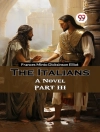In ’The Monastery’ and its companion novel ’The Abbot, ’ Walter Scott delves into the turbulent era of the Scottish Reformation, weaving a rich tapestry of romance, intrigue, and historical authenticity. Scott employs a masterful narrative style characterized by vivid descriptions and nuanced character development, seamlessly blending fact with fiction. The novels are set against the backdrop of religious strife in 16th century Scotland, exploring themes of loyalty, faith, and moral dilemmas as the protagonists navigate the treacherous waters of political and religious contention. Scott’s storytelling brilliance culminates in a dual portrayal of the conflict within the Scottish Church and society, heightened by his signature romantic idealism. Walter Scott, a pivotal figure in Scottish literature and the founder of the historical novel genre, drew from his deep appreciation for Scottish history and folklore. His interest in the rich traditions and cultural complexities of Scotland informed the narrative choices and historical settings in ’The Monastery’ and ’The Abbot, ’ allowing him to capture the essence of his homeland’s challenges during a transformative period. For readers seeking a profound exploration of Scotland’s past intertwined with richly drawn characters, this pair of novels is indispensable. Scott’s works invite you to immerse yourself in the tumultuous history of the Reformation through a lens of drama and passion, making them compelling reads for both history enthusiasts and lovers of literature.
Om författaren
Sir Walter Scott, 1st Baronet (1771–1832) was a prolific Scottish historical novelist, poet, and playwright, widely acclaimed for his ability to intertwine local folklore with the historical narrative. Scott’s contribution to literature shaped the popular perception of Scottish culture and history for generations, earning him the distinction of being one of the greatest writers of historical fiction. His works often reflected his deep knowledge of Scottish history and society, which was a predominant theme throughout his literary career.
Scott’s novel ’The Monastery’ (1820) alongside its sequel ’The Abbot’ (1820), forms a compelling narrative set in the time of the Reformation in Scotland, focusing on the impact of religious and political turmoil on individuals and communities. In ’The Monastery’, Scott explores themes of love, loyalty, and conflict by presenting a fictional account of the residents near the real Melrose Abbey. ’The Abbot’ continues the story of Mary Stuart and the political intrigues of the period. These novels exhibit Scott’s signature literary style, which combines detailed historical backdrop with a keen sense of place and character development. Scott’s works are a testament to his narrative skill and remain significant in the canon of English literature.












